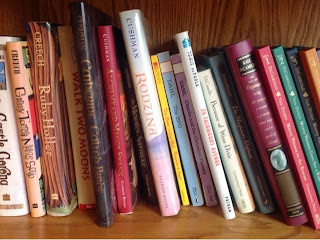A Home for Mr. Emerson, written by Barbara Kerley and illustrated by Edwin Fotheringham, is a bold picture book biography about a man whose many journals chronicled the things he valued in life, the things he considered, and the ways he thought were best for living cooperatively in the world. He named his journal The Wide World, and over the years they were a "Savings Bank" of ideas.
After he married and moved to his first home, he expressed this view: "But we shall crowd so many books and papers, and, if possible, wise friends, into it that it shall have as much wit as it can carry." We have crowded many books into our home and also savor the times spent with wise friends within these walls. Though Mr. Emerson's home was lost to a fire, his faithful friends had a surprise for him when he returned from a voyage oversees.
I really like the way this biography is presented, but even more than that, I like the author's note and the page inviting readers to "build a world of your own." Using three quote from Mr. Emerson's journals, readers are encouraged (through well-worded questions and statements), to consider their own lives.
"The great business of life is to learn ourselves." List five things to describe you and things you love to do.
"Happy is the house that shelters a friend." Write about your favorite room and design your perfect home.
"Make yourself necessary to somebody." Broaden your experiences considering ways to work in your community.
All of the suggestions would make excellent common writing prompts for children and adults.






